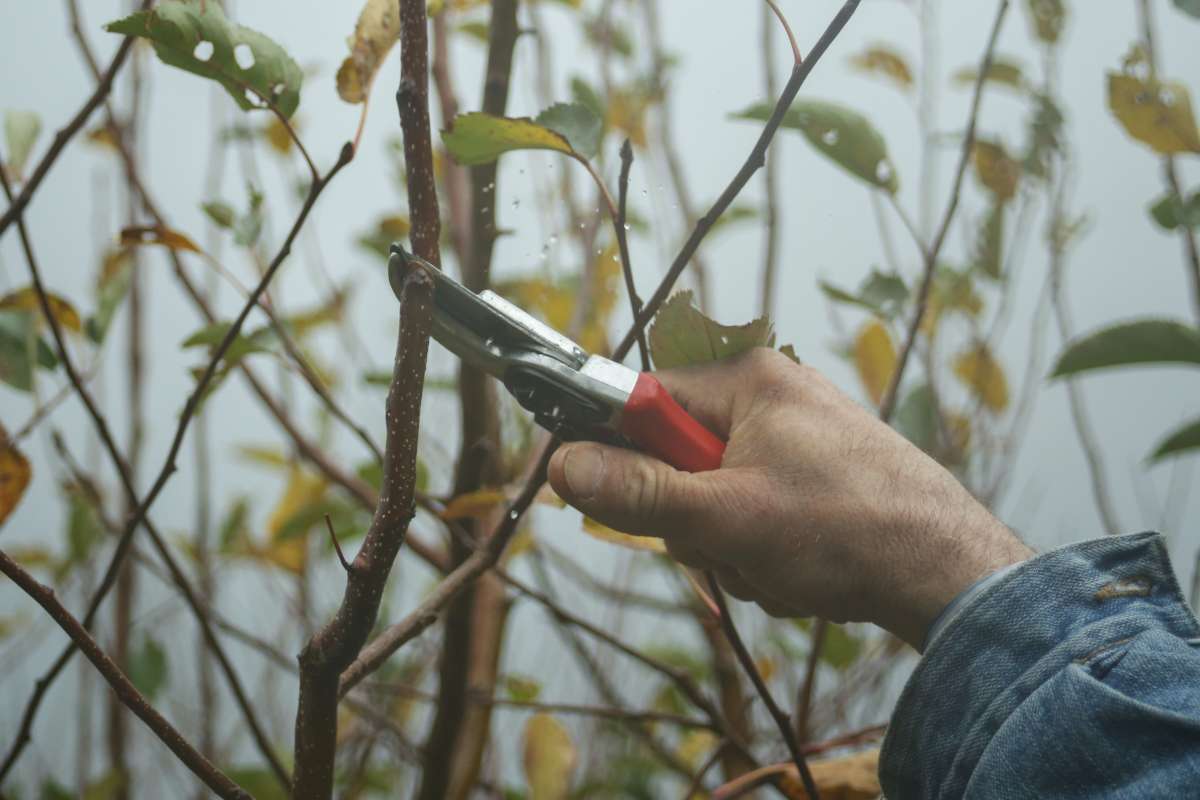If you're a homeowner looking to improve the appearance and health of your trees, tree pruning could be a great option for you.
Tree pruning involves removing dead branches, thinning out dense sections and shaping them into attractive forms. Not only does it promote healthy growth and reduce hazards from falling branches, but it also adds aesthetic value to your garden! But what exactly is tree pruning?
In this blog post, we'll cover everything you need to know about this important outdoor maintenance task—from what tools to use and how often it should be done to the benefits of proper pruning practices. Read on for an in-depth look into all things related to tree pruning!
Pruning Methods: What You Need To Know

Can You Explain What You Mean By The Term "Tree Pruning"?
During pruning, just some branches of a tree are cut away. This aims to shape new growth in a healthy direction while also removing dead or diseased branches.
Why Is It Beneficial To Cut Back On Growth?
Trees benefit greatly from having their branches pruned. Taking the time to prune your plants properly is an investment in their long-term health and the aesthetic value and security of your home or business.
All these issues are solved when trees are trimmed:
- Put away any branches that are dead, broken, or otherwise damaged.
- Prevent tree limbs from falling and damaging your home.
- You can encourage trees to produce strong, new shoots by thinning down overgrown limbs.
- Trees can be trained so that their branches don't grow too high or too far and interfere with your home's structure or your neighbourhood's electrical grid.
- Inject polish and order into your environment by giving your trees a new look.
- Establish a solid base for the tree's continued health.
How Many Distinct Forms Of Pruning Exist?
Depending on the desired outcome, tree-trimming techniques may vary. The most frequent varieties are as follows:
- When the density of an area is decreased, branches are pruned back to their primary nodes. It's a technique for opening a dense canopy to the skylights above.
- Health maintenance is like pruning a tree to maximise its potential. Simple cuts are made to remove any dead, diseased, or broken branches to give the tree a neat appearance.
- Trimming a tree for aesthetic reasons results in a smaller stature and footprint. Trimming down a tree's spread or cutting off branches that are getting too close to power wires are common uses of this technique.
- To improve a plant's structure and long-term health, structural (subordination) cuts may include one or more of the three procedures.
Why You Should Prune

Due to the potential impact of even a single cut on the tree's growth, pruning should be done without hesitation. Pruning has multiple purposes, including corrective and preventive maintenance, improving the tree's appearance (by getting rid of unsightly, diseased, or broken branches), and enabling more sunlight and air to reach lower-growing plants.
Time For Pruning
Regular maintenance, such as pruning, involves removing dead, diseased, or otherwise unproductive branches at any time.
If you want the best growth and wound closure, prune before the spring growth flush. Avoiding severe pruning of weak trees during the period immediately following early spring growth flush is preferable.
When trees are pruned, it creates openings through which disease-causing organisms, such as oak wilt, can spread. It is not safe to take down trees that could be infected while a disease is actively spreading.
Talk to a professional arborist if you need clarification about when to prune.
Tools And Methods For Pruning
Depending on the type of mature tree, some pruning might be required to keep it healthy, secure, and aesthetically pleasing.
- The crown of a tree is cleaned when branches that are dead, dying, diseased, poorly attached, or lack robustness are cut away.
- When a tree is raised, its lower branches are cut off to make room for other structures, roads, walkways, and views.
- Trees are typically pruned down for power line clearance purposes. When attempting to reduce a tree's height or width, it is recommended to prune back the leaders from branch terminals to larger, secondary branches. If you want to keep the shape and stability of your tree, the reduction is a better option than topping.
- Thinning is the process of reducing the plant density of foliage around the crown's outer edge to allow more wind or sunlight penetration for both aesthetic reasons and encourage foliage growth in the crown's interior.
Trees That Are Pruned Properly Flourish.
When pruning a plant for health, the goal is to promote optimal growth by eliminating any dead, diseased, or rubbing branches and any stubs of branches. By allowing more light and air to reach the tree's leaves, we may boost our foliage while reducing the likelihood of disease.
Suckers or water sprouts at ground level weaken the timber and take nutrients from the main tree. By encouraging the development of a single trunk and a strong leader, you can strengthen a tree to resist harsh conditions such as a harsh winter or severe winds.
Care for the landscape and pruning for aesthetics work together to produce the perfect plant. For example, trees can be shaped into desired forms, their sizes managed, and fruiting and flowering prompted through careful pruning and trimming.
Reducing Hazardous Branches
Pruning improves the health and strength of trees. Pruning your trees for safety is an important consideration that is often overlooked. If you trim the trees within your yard, you can ensure the safety of your loved ones.
Falling debris from trees, diseases, and weakened limbs pose serious risks to persons and property. Keep in mind the location of traffic lights, power lines, and any obstructions to your line of sight before beginning any tree trimming.
It may be necessary to thin down branches and remove any dead limbs from trees in your area before hurricane season. During storms, trees that have amassed excessive foliage are more likely to topple over, increasing the risk of injury to people and property below.
The Art Of Tree Trimming
Keep in mind that any cuts you make while thinning, reducing, and shaping small enough branches and limbs to cut without hand tools will result in new growth. Keeping this in mind, trim away any excess growth around a quarter of an inch from an outward-facing bud. The expansion will take place in that way. To avoid water damage and sickness, ensure your cuts are at a 45-degree angle.
FAQs About Tree Pruning
Pruning removes dead and dying branches and stubs, allowing room for new growth and protecting your property and passerby from damage. It also deters pest and animal infestation and promotes the plant's natural shape and healthy growth.
However, the three most basic and useful practices are thinning, heading, and rejuvenation. The final goal of any pruning practice is to increase the health and aesthetics without giving the tree or shrub the look of having been pruned.
Trees also might need to be pruned and therefore reduced in size if they have dead, diseased, crossing or torn branches. It is usually best to try and keep tree (and shrub) growth under control with regular pruning, but this is not always practical, especially if you inherit overgrown trees and shrubs in a new garden.
Pruning to remove damaged, dead or diseased parts can be done at any time of the year. Most trees and shrubs, especially those that flower on current season's new growth should be pruned in late winter or early spring before the onset of new growth. (March-April).
Pruning reduces the complexity of the final classifier and hence improves predictive accuracy by the reduction of overfitting.
Conclusion
Cutting away diseased or otherwise unusable branches, thinning out overgrown areas, and shaping trees into more aesthetically pleasing shapes are all part of tree pruning. Pruning is an investment in the long-term health of your plants as well as the worth and safety of your home or company. Everything you need to know to perform this vital piece of outdoor maintenance is included in this post. When you prune a plant, you remove some of the outermost leaves to increase airflow and light penetration into the crown. Dead, dying, diseased, poorly attached, or weak branches are removed, cleaning the crown of the tree.
To prune a tree down in size, start at the branch tips and work your way down to the larger secondary branches. Trees' vitality and resilience can be boosted by proper pruning. If you prune a tree so that it grows one main trunk and a dominant leader, the tree will be better able to withstand severe weather and winds. The risk of injury to persons and damage to property is increased during storms when trees with an abundance of leaves are more prone to fall.
Content Summary
- In order to enhance the aesthetic value and overall health of your trees, tree trimming may be a good choice for you as a homeowner.
- Cutting away diseased or otherwise unusable branches, thinning out overgrown areas, and shaping trees into more aesthetically pleasing shapes are all part of tree pruning.
- It improves the garden's aesthetic value while also fostering robust development and decreasing risks associated with falling branches.
- Everything from the tools you'll need, to how often you should prune, to the many positive outcomes that result from doing so, and more, will be discussed in this piece.
- Keep reading for a comprehensive analysis of tree trimming.
- A tree's branches are selectively removed during the pruning process.
- By eliminating sick or dead branches and training new growth in a more favourable direction, this practise promotes tree health.
- As to what ends would slowing expansion serve, please explain.
- Pruning tree branches is very important.
- Pruning is an investment in the long-term health of your plants as well as the worth and safety of your home or company.
- Tree trimming is the solution to all of these problems.
- Dead, damaged, or otherwise unusable branches should be put away.
- Avoid having limbs fall on your house.
- Overgrown limbs can be pruned away to stimulate the growth of healthy new growth in trees.
- Trees can be taught so that their branches don't grow dangerously close to or far from a building or power lines.
- Giving your trees a makeover is a great way to spruce up your yard and bring some much-needed order to your surroundings.
- Develop a sturdy foundation to ensure the tree's continued well-being.
- It's possible to use a variety of tree-trimming methods, depending on your objectives.
- Subordination cuts (also known as structural cuts) might involve any of these three methods, all of which are used to strengthen and preserve a plant's foundation for the long term.
- Pruning should be done without delay because even a single cut might stunt the tree's development.
- Pruning serves several functions, including corrective and preventative maintenance, aesthetic improvement (by removing dead, diseased, or otherwise undesirable branches), and increased light and airflow to lower-growing plants.
- Pruning, a kind of regular care, can be used at any moment to get rid of any branches that are dead, diseased, or just not producing anything.
- Proper pruning prior to the spring growth flush will result in optimal wound closure and new growth.
- When possible, it's best to avoid performing any major trimming on fragile trees during the time right after the spring growth flush.
- Oak wilt and other diseases can spread more easily after trees have been trimmed.
- When a disease is actively spreading, it is not safe to cut down trees that could be contaminated.
- If you are unsure of when to prune, it is best to consult a professional arborist.
- Pruning may be necessary to keep a mature tree healthy, secure, and aesthetically beautiful, however this will vary depending on the species.
- Dead, dying, diseased, poorly attached, or weak branches are removed, cleaning the crown of the tree.
- In order to make room for buildings, roads, walkways, and views, the lower branches of trees must be removed when they are lifted.
- Clearing space for power lines is the most common reason for tree trimming.
- Prune back the leaders, or the very tips of branches, to larger secondary branches if you want to trim a tree down in stature or width.
- Reducing a tree, as opposed to topping it, is the best way to preserve its form and stability.
- The goal of thinning is to increase airflow and light penetration into the crown of a plant, improve the tree's appearance, and stimulate new growth in the interior of the crown, all at once.
- If you prune a tree so that it grows one main trunk and a dominant leader, the tree will be better able to withstand severe weather and winds.
- The ideal plant is the result of careful landscape maintenance and artistic pruning.
- Pruning and trimming trees, for instance, can mould them into specific shapes, control their growth, and stimulate fruiting and flowering.
- Trees' vitality and resilience can be boosted by proper pruning.
- Maintaining a safe distance from power lines and other hazards requires regular tree pruning.
- Maintaining the trees in your yard is one way to protect your loved ones from harm.
- People and property are at danger when trees die or have weakening branches due to disease or storm damage.
- Before you start cutting down trees, make sure you have a plan for how you'll avoid damaging any electricity lines, traffic signals, or other structures that might get in the way.
- Before hurricane season, it may be required to thin out the tree branches and remove any dead limbs.
- The risk of injury to persons and damage to property is increased during storms when trees with an abundance of leaves are more prone to fall.
- When thinning, reducing, and shaping little branches and limbs that are amenable to hand cutting, remember that all of your efforts will be rewarded with new growth.
- Keep this in mind and remove any overgrowth that is closer to a quarter of an inch from a bud that is pointing outward.
- This is how the growth will occur.
- Make sure your cuts are at a 45-degree angle to minimise the risk of water damage and illness.

